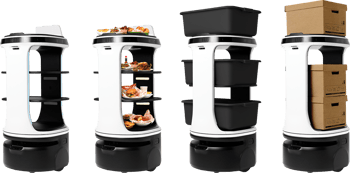Turnover. It’s part and parcel of the restaurant industry. As one of the biggest employers of teenagers and students — both of whom don’t operate on year-round schedules — as well as seasonal staff and part-time employees, restaurants naturally face large attrition. And in times of economic uncertainy, holding on to staff is at the forefront of every restaurant owner’s mind. That’s why effective communication is so important. These eight techniques will help you keep your staff close and keep your turnover low.
To put the need for clear and consistent staff communication in stark perspective, consider this: In 2018, the turnover rate in the hospitality sector topped 70 percent for the fourth consecutive year, according to data from the Bureau of Labor Statistics’ Job Openings and Labor Turnover (JOLTS) program. During uncertain times, traditionally high turnover businesses like restaurants need to be focused more than ever on building team loyalty through communication.
1. Match the effort you make on external messaging
Spending hours developing just the right social media post can be great for advertising a new menu item, but don’t forget to clearly communicate with your staff as well. Develop an in-house email newsletter or put up a message board in the kitchen to get everyone on the same page. Consider using a library of restaurant flyer templates that can be customized to suit your needs.
2. Keep messages short and sweet
Shakespeare said “brevity is the soul of wit,” but that saying is also just a great pro-tip for communicating in general. Keep messages to staff short and succinct.
Be honest about your business. Never underestimate the power of transparency. In times of turmoil, it’s critical that you own your issues and let your staff hear about them from you, not through the gossip grapevine, especially if it may result in temporary layoffs. Rather than hide problems, let your staff know so that any employment changes don’t come as a surprise.
3. Talk to team members individually
Team meetings are great, but a one-on-one talk with a staff member gives them a chance to discuss things that they might not be able to during their shift and to clear up any concerns or miscommunications.
4. Consider your business holistically
Difficult times can be overwhelming for any restaurant owner, but remember to consider struggles as not just our own burden, but as a problem for the entire staff. Stay positive, but be realistic.
5. Consider your sources
When communicating with staff, especially during a health crisis or other uncertain times, be sure you’re passing on vetted information, especially as it might pertain to HR issues.
Whatever the message is you’re trying to convey, remember, as in most situtaitons, honesty is the best policy. By being honest with your staff, you’ll build trust, which can help foster community and loyalty, two key elements in keeping a tight team together.
[Photo: Dmitry Zvolskiy via Pexels]





